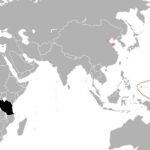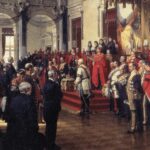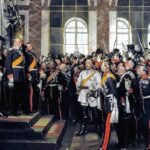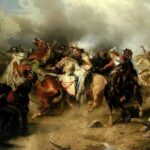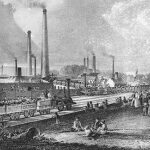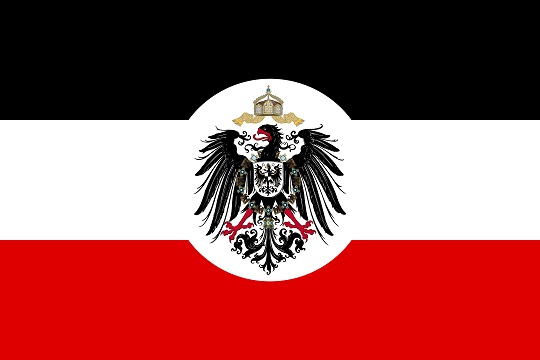
When we think about European colonialism, Britain, France, and Spain dominate the story. Germany, however, carved out its own empire during the late 19th century, driven by ambition, competition, and the thirst for global power. Though Germany entered the colonial race relatively late, its impact on Africa, Asia, and the Pacific was profound and long-lasting. German Colonial Ambitions were not merely about acquiring land – they were about status, national pride, and economic opportunity. This article explores how Germany’s empire-building shaped both global history and Germany’s identity.
Germany’s rise to imperial power was rapid and determined. Following unification in 1871 under the leadership of Otto von Bismarck, the new German Empire sought to assert itself among Europe’s older colonial powers. By the 1880s, Germany had secured territories in Africa, the Pacific, and China. Though its colonial empire was smaller and shorter-lived compared to others, its influence was far-reaching.
Colonies like German East Africa and German Southwest Africa became major economic and strategic hubs. Scientific expeditions, missionary activities, and military campaigns defined German presence abroad. Unfortunately, brutality and exploitation were just as much a part of Germany’s colonial rule as infrastructure projects and cultural missions.
Understanding German Colonial Ambitions gives important insight into modern debates about colonial legacies, national identity, and international responsibility.
The Political and Economic Drivers of German Colonialism
Germany’s move toward empire was fueled by internal and external forces. Industrialization had created massive economic growth, but also intensified the search for new markets and raw materials. Nationalist sentiment, encouraged by thinkers and politicians, framed colonial acquisition as a matter of national destiny.
Bismarck initially resisted overseas expansion, focusing on European power balance. However, domestic political pressure and business lobbying eventually changed his stance. By the time of the Berlin Conference of 1884 – 1885, Germany was a leading player in dividing Africa among European powers.
Major German Colonies
German East Africa (modern Tanzania, Rwanda, Burundi) was Germany’s largest and most economically valuable colony. Cotton plantations, railroads, and military outposts defined the region.
German Southwest Africa (now Namibia) was heavily settled by Germans and witnessed one of the first genocides of the 20th century, when German forces brutally suppressed the Herero and Nama uprisings.
Kamerun (Cameroon) and Togoland (Togo) served as vital centers for agricultural exports like cocoa and rubber.
In the Pacific, Germany acquired New Guinea, Samoa, and numerous islands, using them for trade routes, plantations, and naval bases.
Administration and Colonial Society
German colonial administration was rigid, hierarchical, and often brutal. Local populations were excluded from meaningful participation. European settlers and administrators imposed German laws, education systems, and languages. Missionaries attempted to convert local populations to Christianity, while scientists conducted research expeditions that filled German museums with artifacts, many of which are now subjects of repatriation debates.
Life in the colonies was marked by segregation, racial hierarchy, and economic exploitation. Infrastructure projects like railways and telegraphs were built – but often using forced labor under horrific conditions.
Conflicts and Rebellions
Resistance to German rule was common. In German Southwest Africa, the Herero and Nama peoples rose up against settlers in 1904. The German military responded with overwhelming force, driving thousands into the desert where they died of thirst and starvation.
In German East Africa, the Maji Maji Rebellion of 1905 – 1907 involved tens of thousands of Africans resisting colonial rule. Though the rebellion was ultimately crushed, it demonstrated the depth of resentment toward German governance.
These conflicts left deep scars in the national memories of the countries involved and have led to modern-day calls for apology and reparations.
Today, traces of Germany’s colonial past remain visible. In Namibia, German architecture, street names, and language influences persist. In Tanzania, remnants of German-built railroads are still in use. Colonial-era artifacts fill German museums, and debates over their return are ongoing.
Germany has taken some steps toward acknowledging its colonial crimes. In 2021, the German government officially recognized the Herero and Nama genocide and pledged financial support to Namibia.
Cultural initiatives are also underway. Universities and institutions across Germany have launched research projects focused on colonial history. Public spaces once named for colonial figures are being renamed, and discussions about the colonial legacy are part of school curricula.
For travelers, exploring Germany’s colonial legacy provides a deeper understanding of the country’s complex identity. Exhibitions, monuments, and museums offer insights into this lesser-known chapter of German history.
German Colonial Ambitions were about more than acquiring land. They were about asserting national pride, competing on the world stage, and fulfilling a vision of modern empire. Though Germany’s overseas empire was relatively short-lived, it left lasting marks on the countries it occupied and on Germany itself.
Understanding this history is crucial to understanding Germany’s evolving identity and its efforts to confront uncomfortable parts of its past. From monuments to museum exhibits, the legacy of German colonialism remains alive today – reminding us that the past is never truly past.
To explore more fascinating chapters of German history, check out:
